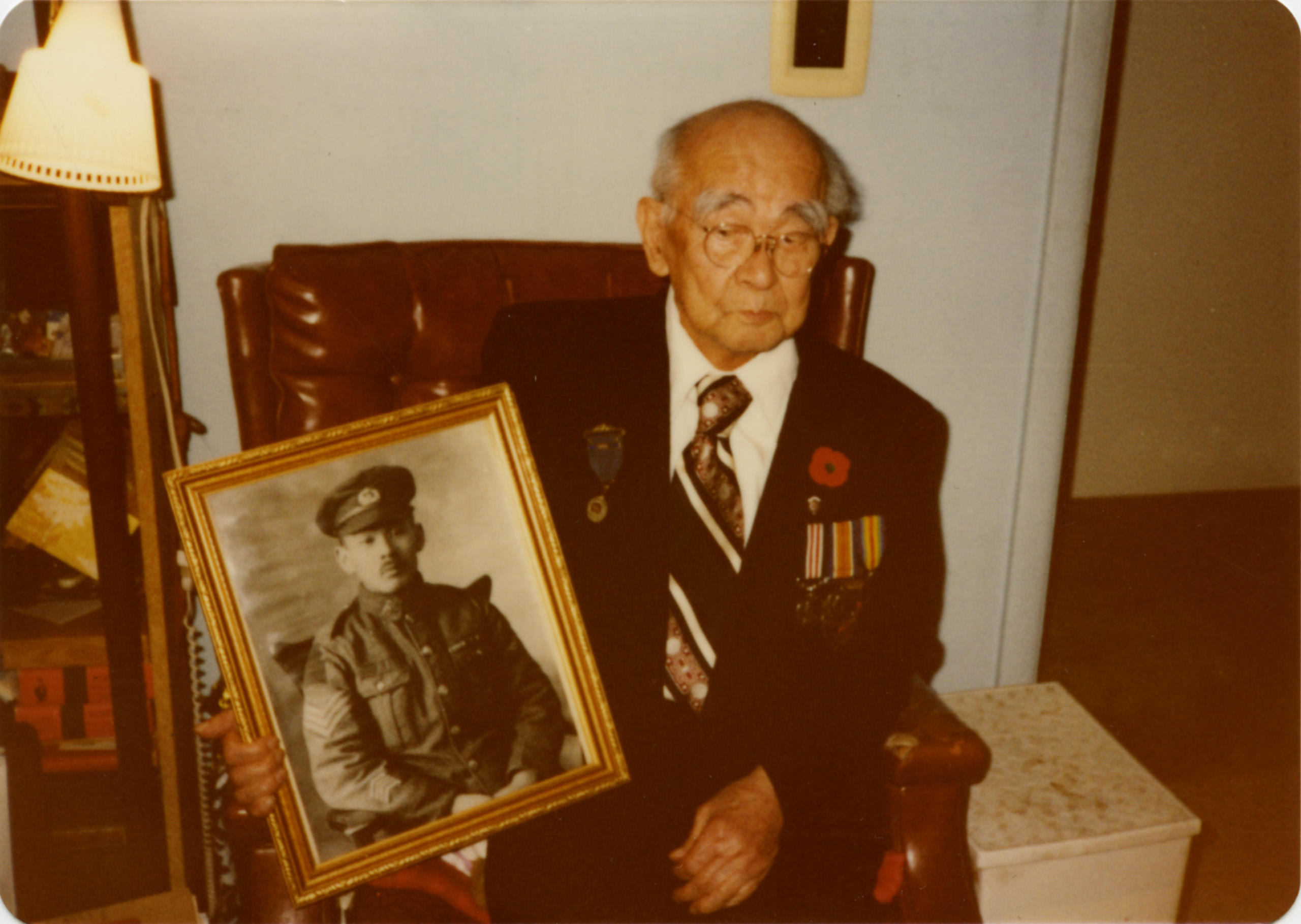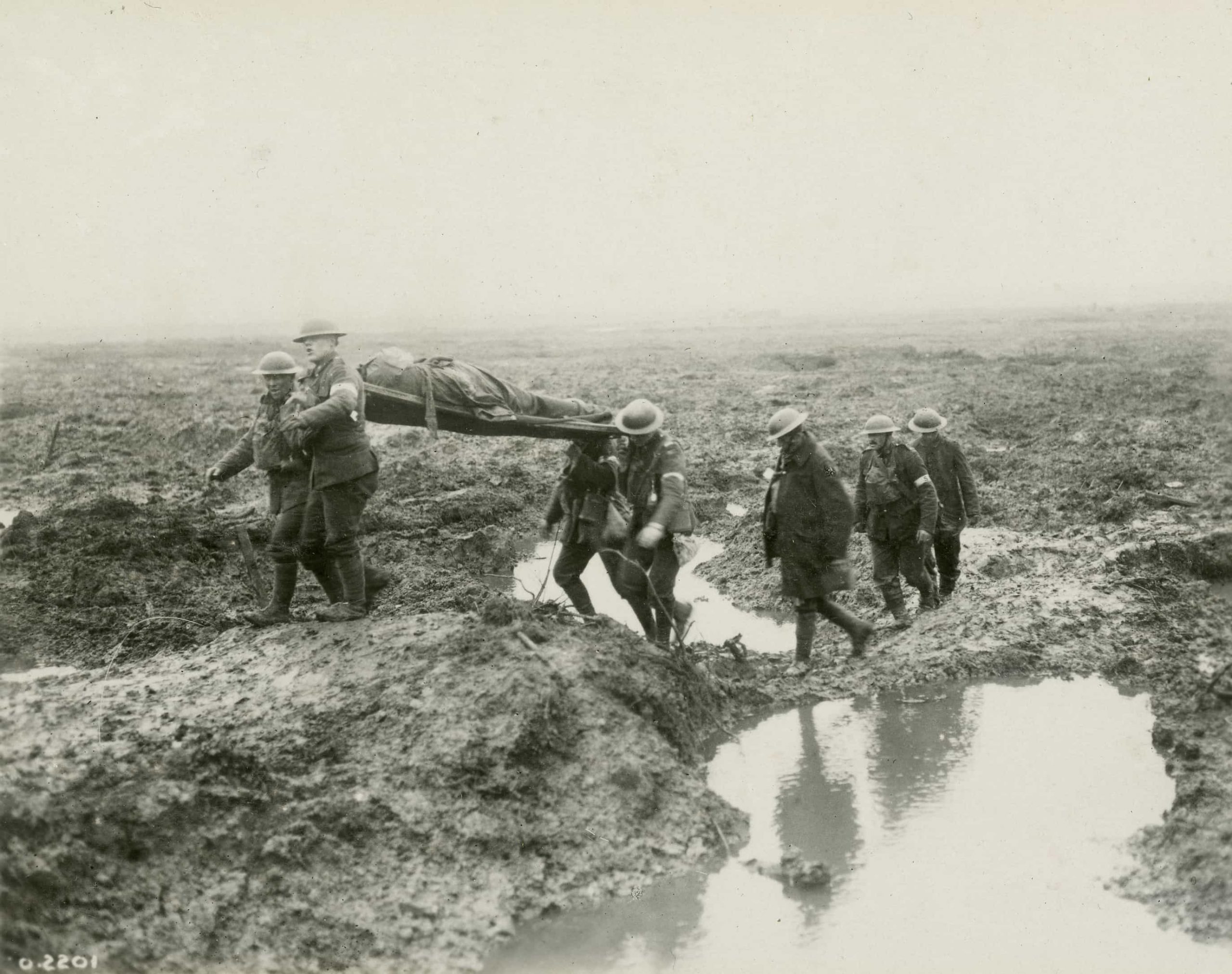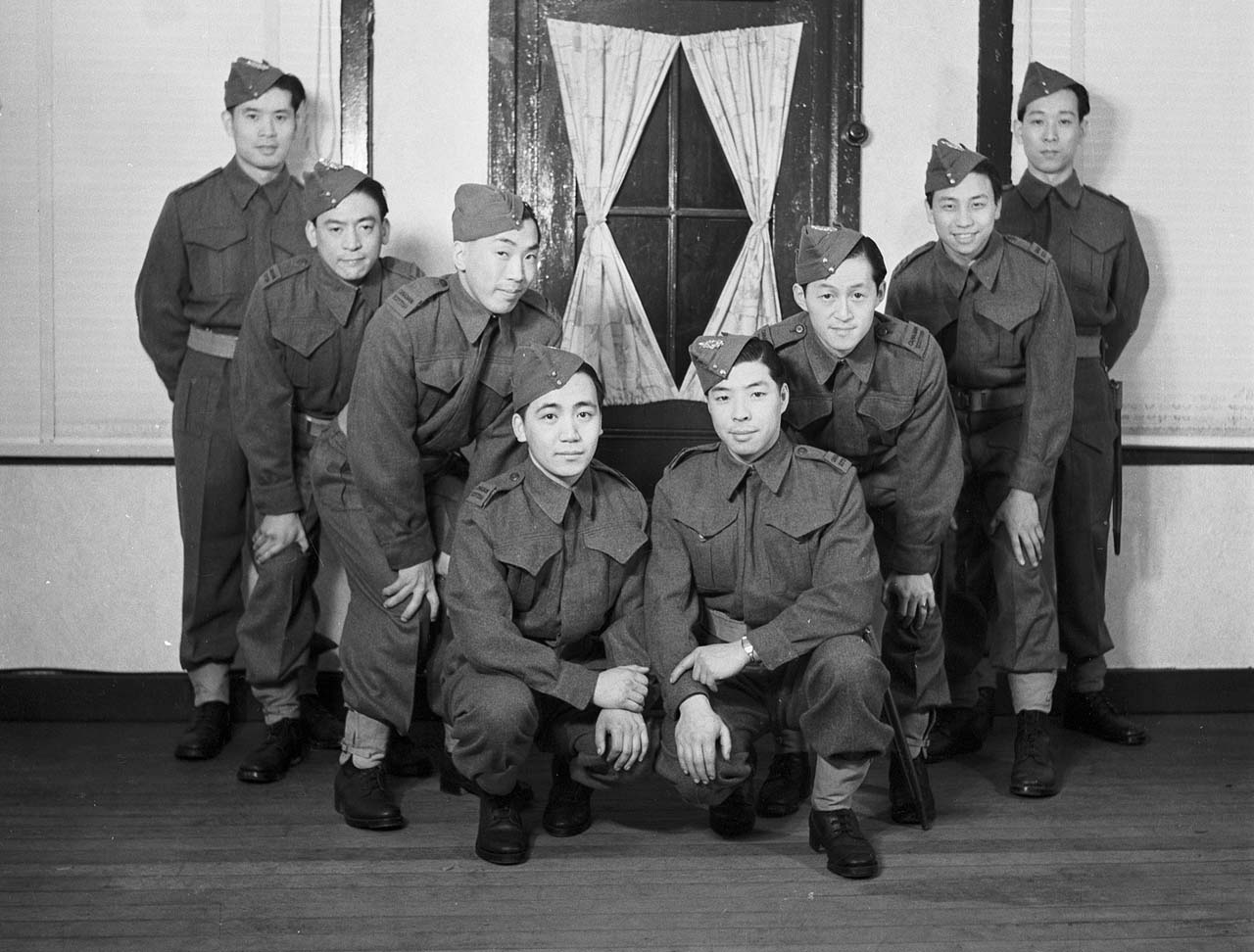The Canadian War Museum holds millions of objects in the National Collection. But sometimes it is necessary to look beyond our collection to be able to share a wide range of stories about Canada’s military history.
This photograph of Masumi Mitsui is an example. It comes from the Nikkei National Museum in Burnaby, British Columbia.
In this photograph, we see Sergeant Masumi Mitsui holding a portrait of himself as a young man in uniform, from the First World War.
But there is more to this picture than a veteran’s pride in his wartime service. There is a story that spans decades, through the two world wars and beyond.
Mitsui was born into a military family in Japan in 1886. He emigrated to Victoria, British Columbia, in 1908, where he worked as a farmer and a head waiter.
Mitsui was eager to serve in the First World War. He tried to enlist in British Columbia but was unsuccessful, so he travelled east to Alberta, where he was accepted for overseas service in 1916.
Alongside his fellow Canadians in the 10th Battalion, Private Masumi Mitsui fought at the Battle of Vimy Ridge in April 1917. This costly victory came to symbolize Canada’s significant achievements and sacrifices in the war.
Mitsui was wounded in combat later that month but recovered and continued to serve. For his bravery in leading 35 men into battle at Hill 70, near Lens, France in August 1917, he was promoted to sergeant and awarded the Military Medal.
After the war, Mitsui returned to British Columbia, where he started a poultry farm. He married, and he and his wife, Sugiko, had four children.
He was also a leader in the fight for Japanese Canadian voting rights. At the time, Japanese Canadians in British Columbia were barred from voting because of racial discrimination. Mitsui and others were partially successful in 1931, when Japanese Canadian veterans secured the right to vote in British Columbia.
Despite this victory, anti-Japanese sentiment deepened in the 1930s. Some white people viewed the Japanese Canadian community in British Columbia as an economic threat. Their fear was fueled in part by rising unemployment during the Great Depression.
When Canada went to war with Japan in December 1941, Mitsui wrote to the government, offering to serve in the military again. He was turned down. Little did he know that his life was about to be torn apart.
In 1942, Canada began detaining Japanese Canadians, seizing their property, and forcibly moving them into camps far from the Pacific coast. It was a period of profound fear and dislocation. These events are known as the internment of Japanese Canadians. Other terms used include “uprooting”, “forced relocation”, and “incarceration”.
Masumi Mitsui was ordered to register to be relocated. He went with his daughter and took his medals. According to family legend, he also wore his uniform.
His daughter says that he approached the registration official, exclaiming, “What are you doing to me? I served my country. You’ve taken everything away from me.… What are the good of my medals?” he threw his medals on the official’s desk, and they fell to the floor. The official picked them up and handed them back to him but offered no defence of the government’s policy.
Masumi Mitsui and his family were forcibly relocated to Greenwood, British Columbia. Their land, barns, newly built house, furniture, and entire flock of poultry were seized and sold off at exceedingly low prices.
After the war, the Canadian government continued to restrict the civil liberties of Japanese Canadians. They were given the choice of moving to Japan or resettling east of the Canadian Rocky Mountains. While Masumi Mitsui had spent the first 22 years of his life in Japan, Canada was his home. The family decided to move to Hamilton, Ontario.
They all carried the emotional scars of Japanese Canadian internment. For years, Mitsui refused to wear his medals or participate in official Remembrance Day events. Though he wanted to honour Canadian veterans, he felt betrayed by the injustice he and his family faced during the Second World War.
This photograph shows Mitsui during a private remembrance ceremony.
In 1985 — as part of the Japanese Canadian campaign to right injustices they had suffered during the Second World War — Sergeant Masumi Mitsui, then 98, was invited to take part in a ceremony in Vancouver.
There, as the last surviving Japanese Canadian veteran of the First World War, and wearing his medals, he helped re-light the eternal flame of remembrance that is part of the Japanese Canadian War Memorial, erected in 1920. It had been extinguished in 1942.
Masumi Mitsui died in 1987, one year before the Canadian government signed a redress agreement with the Japanese Community that included financial compensation and a formal apology for its wartime treatment of them.
During the First World War, Masumi Mitsui served bravely in the Canadian military.
During the Second World War, the veteran and prominent community leader faced grave injustice. He maintained a life-long practice of remembrance, never forgetting the world wars and the service that he and his comrades performed for Canada.



